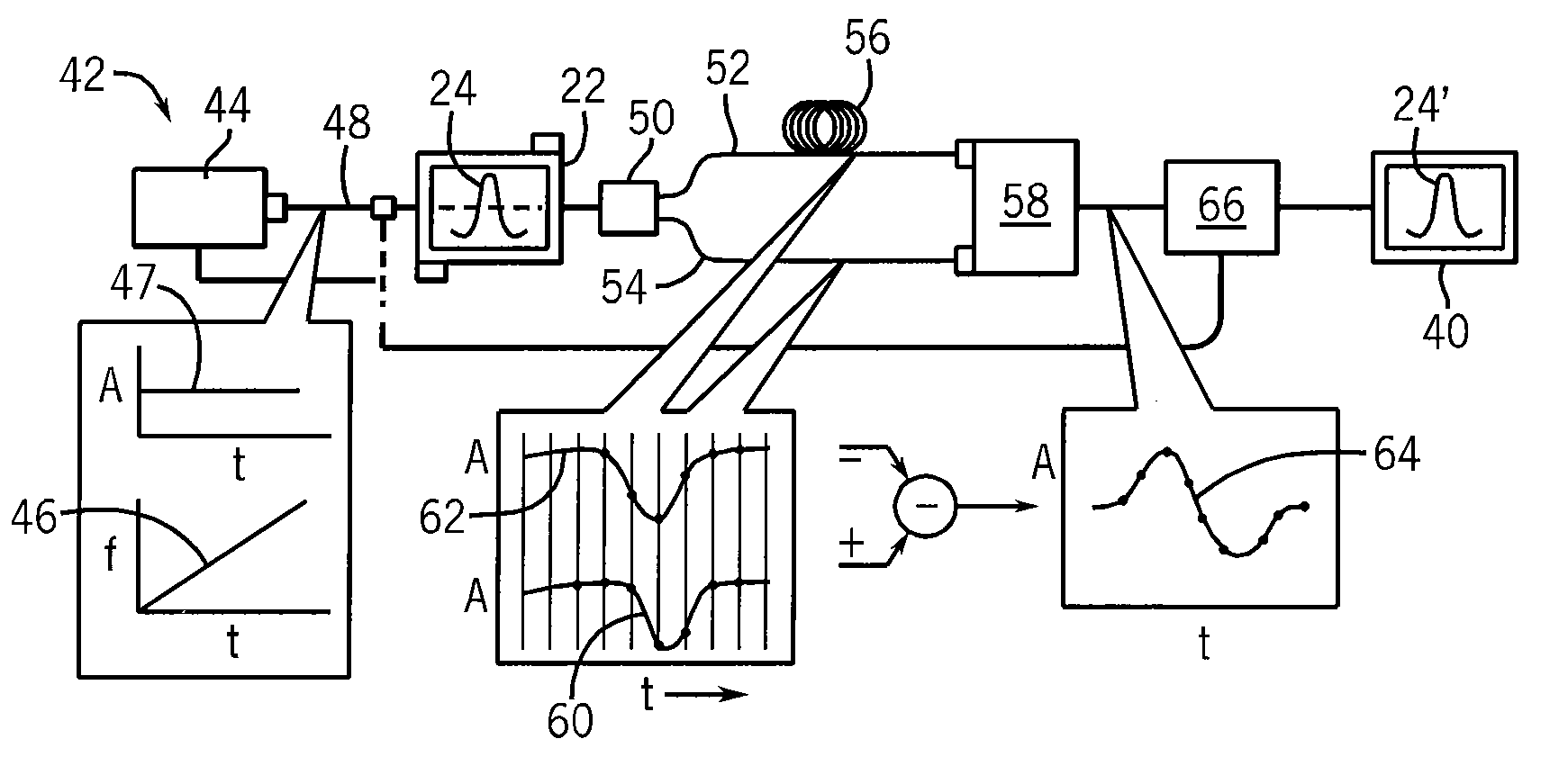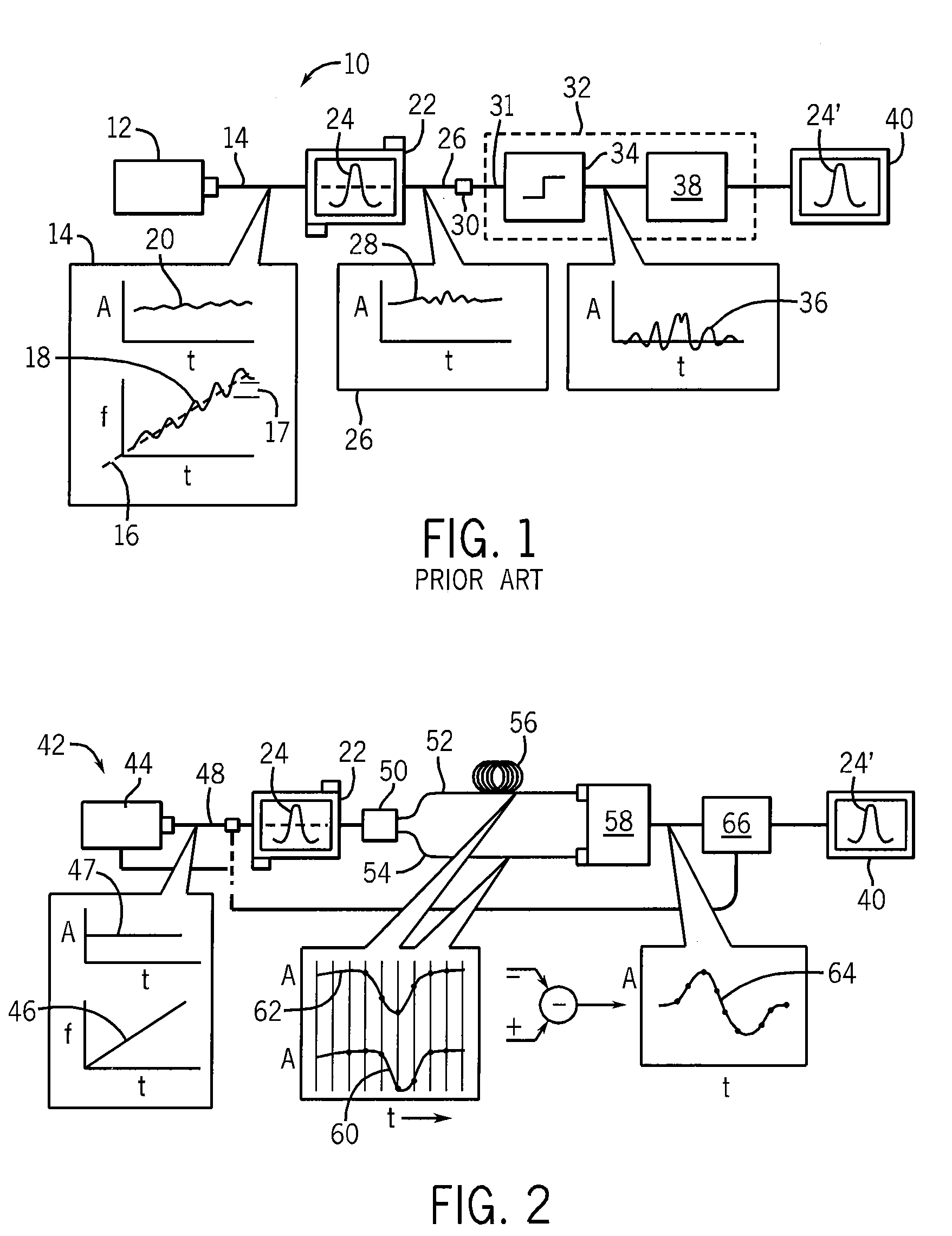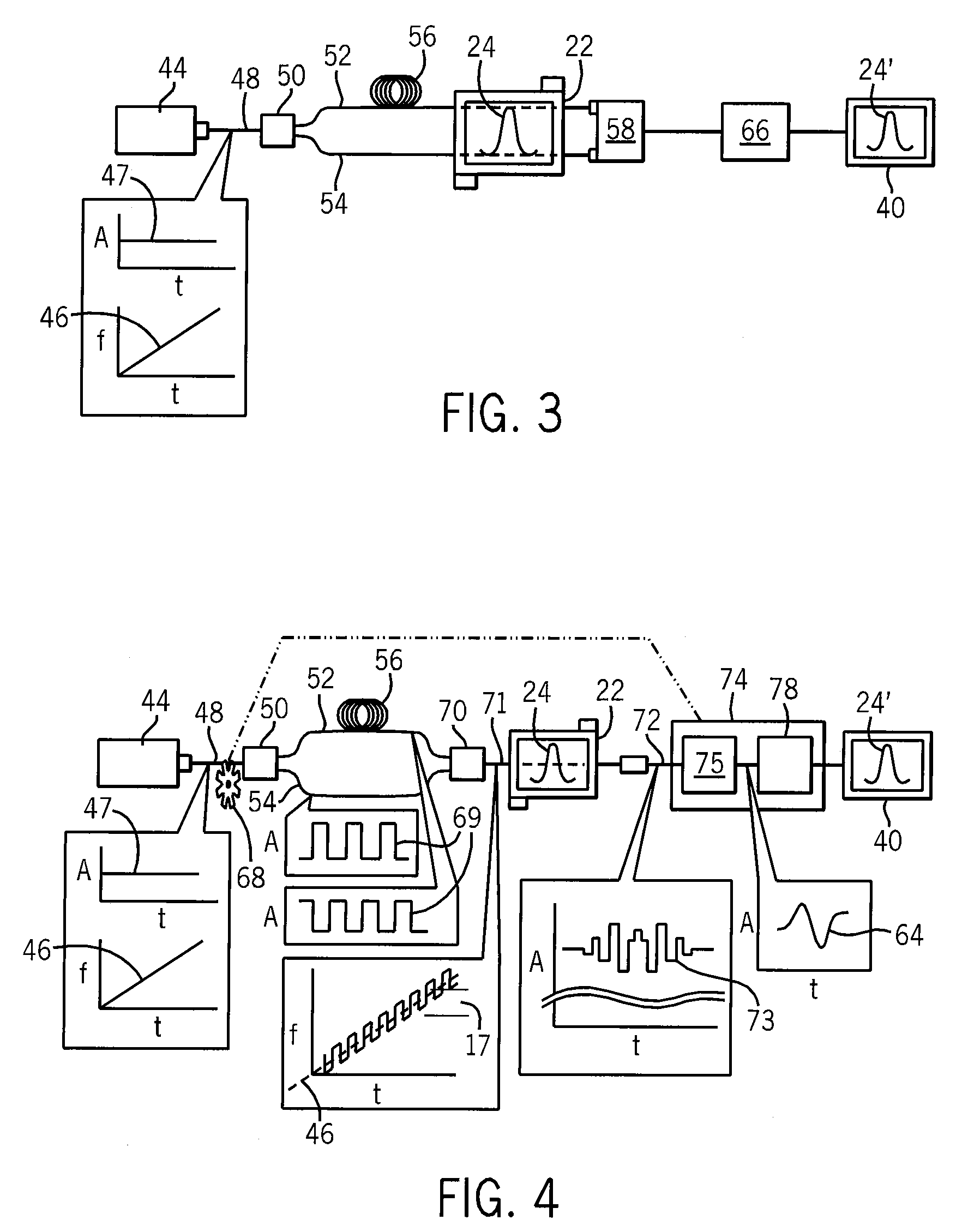Background-free absorption spectroscopy using spectral differentiator
a spectroscopy and absorption spectroscopy technology, applied in the field of absorption spectroscopy systems, can solve the problems of difficult to control the dithering in a stable manner or manage incidental amplitude modulation, and the difficulty of reducing the need for and eliminating the complexity of injection current control, and reducing the effect of background radiation
- Summary
- Abstract
- Description
- Claims
- Application Information
AI Technical Summary
Benefits of technology
Problems solved by technology
Method used
Image
Examples
Embodiment Construction
[0031]Referring to FIG. 1, a prior art wavelength or frequency modulated absorption spectrometer 10 may provide a light source 12, such as a laser, outputting a monochromatic light 14 that may be swept monotonically in frequency over time as indicated by dotted line 16 to provide a general trend of, for example, increasing frequency with time. The light 14 may also be “dithered” with small frequency excursions to produce a frequency-swept and dithered modulation pattern 18. During this frequency modulation, the amplitude 20 of the light (its intensity) is desirably substantially constant but in practice has small amplitude modulations caused by the dithering.
[0032]The output light 14 is received by a test cell 22 which should be understood herein to include a standard laboratory test cell 22 but also effective test cells such as a specially fitted combustion chamber or the like as well as environmentally open volumes used in atmospheric study. Material within the test cell 22 may ha...
PUM
 Login to View More
Login to View More Abstract
Description
Claims
Application Information
 Login to View More
Login to View More - R&D
- Intellectual Property
- Life Sciences
- Materials
- Tech Scout
- Unparalleled Data Quality
- Higher Quality Content
- 60% Fewer Hallucinations
Browse by: Latest US Patents, China's latest patents, Technical Efficacy Thesaurus, Application Domain, Technology Topic, Popular Technical Reports.
© 2025 PatSnap. All rights reserved.Legal|Privacy policy|Modern Slavery Act Transparency Statement|Sitemap|About US| Contact US: help@patsnap.com



